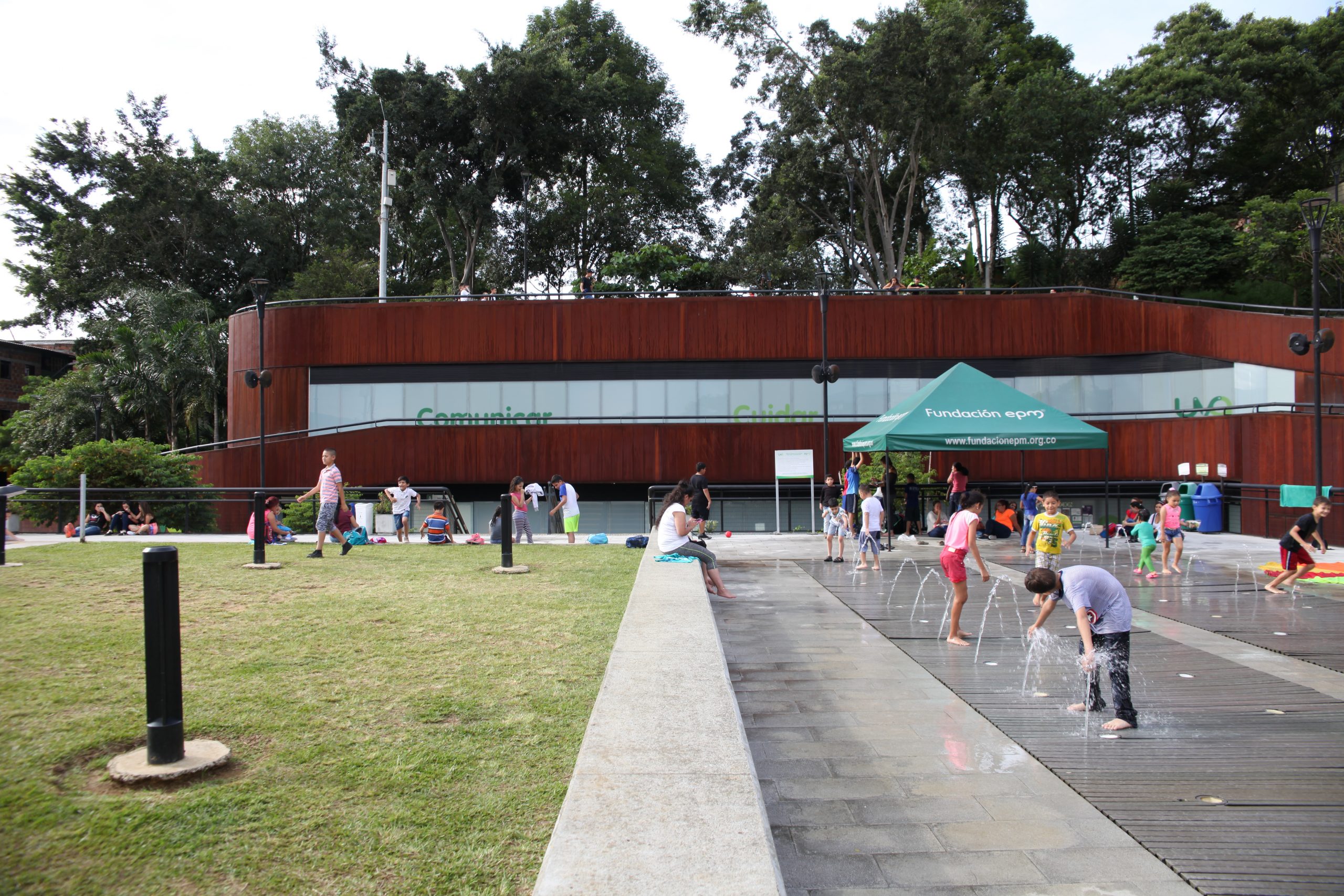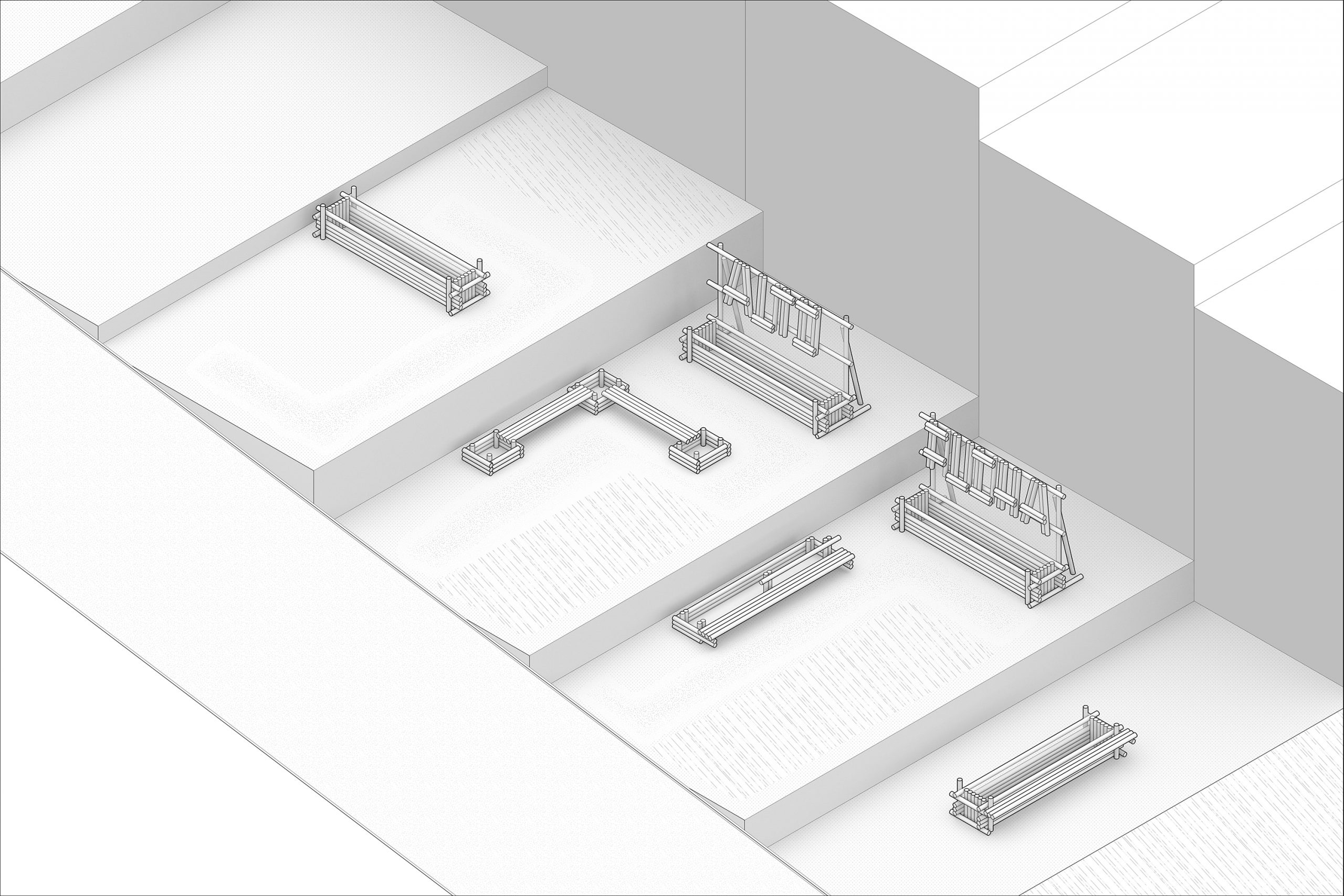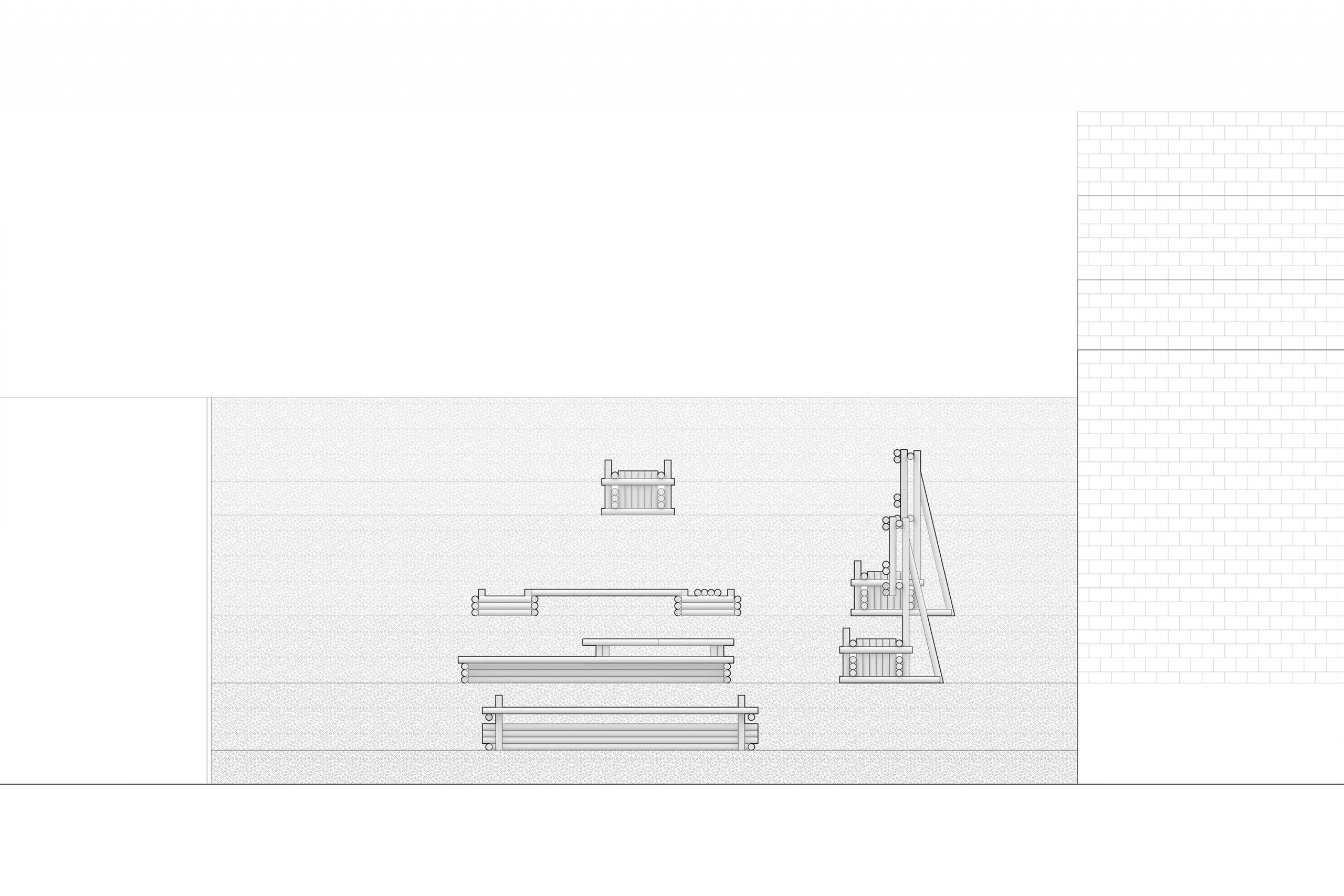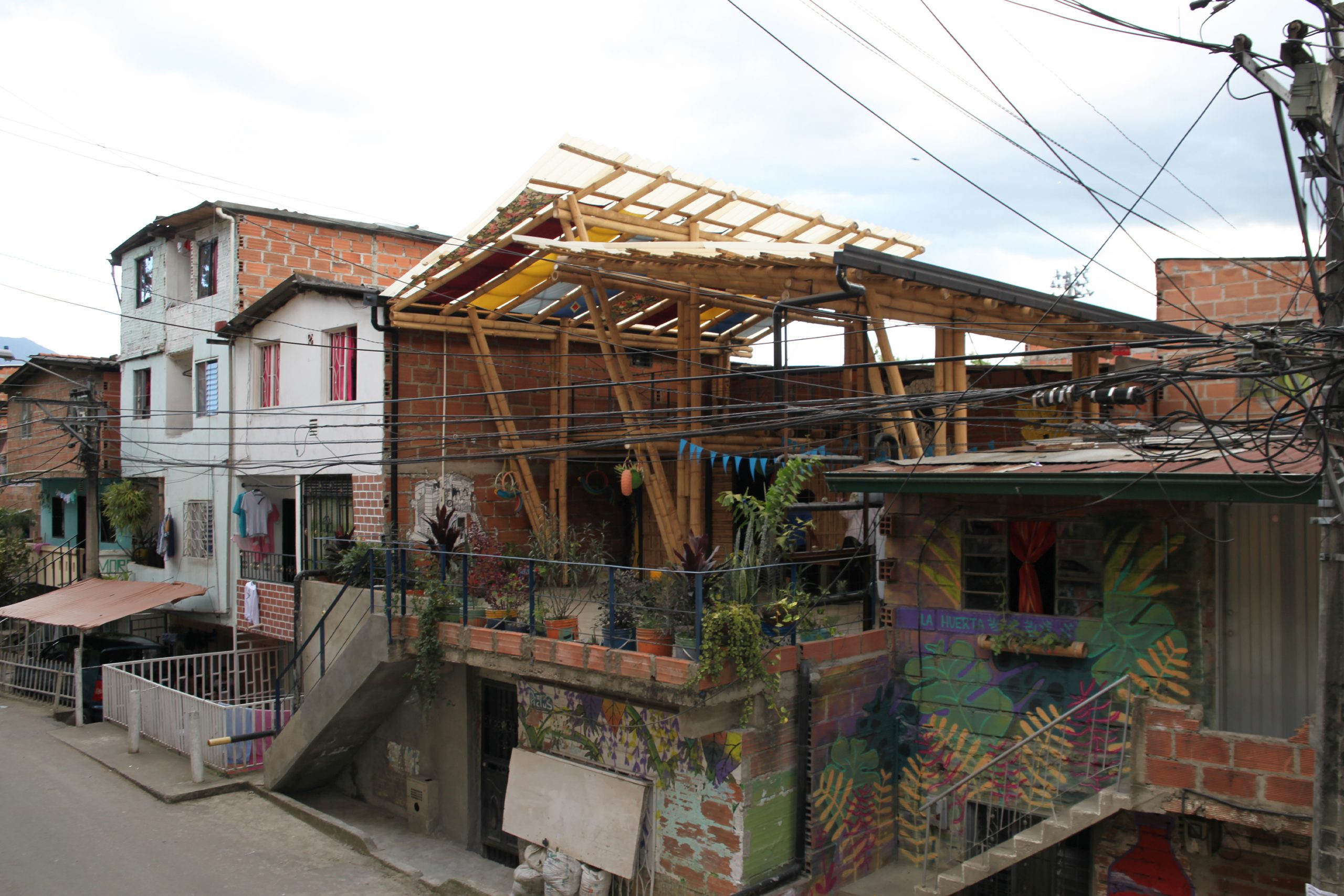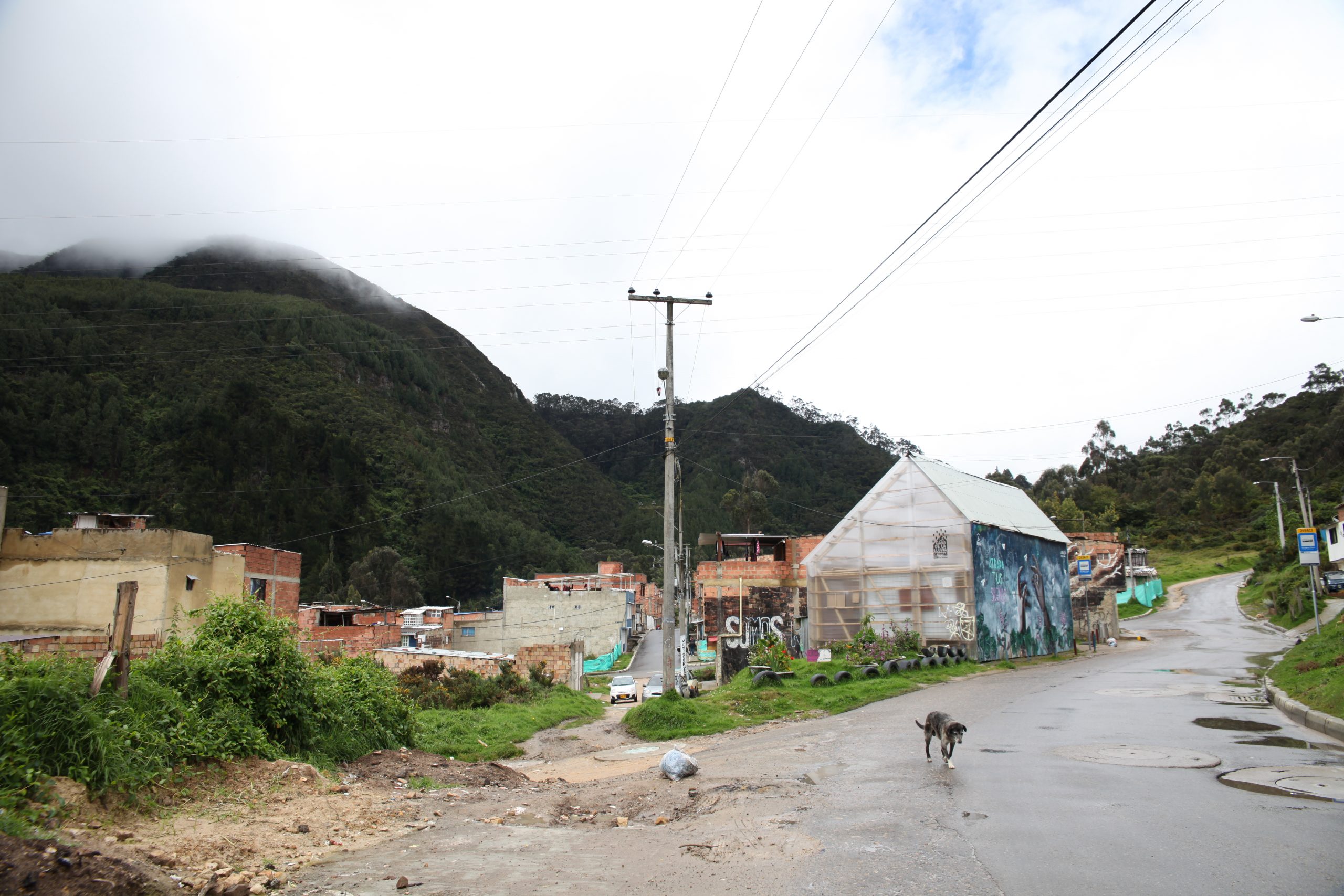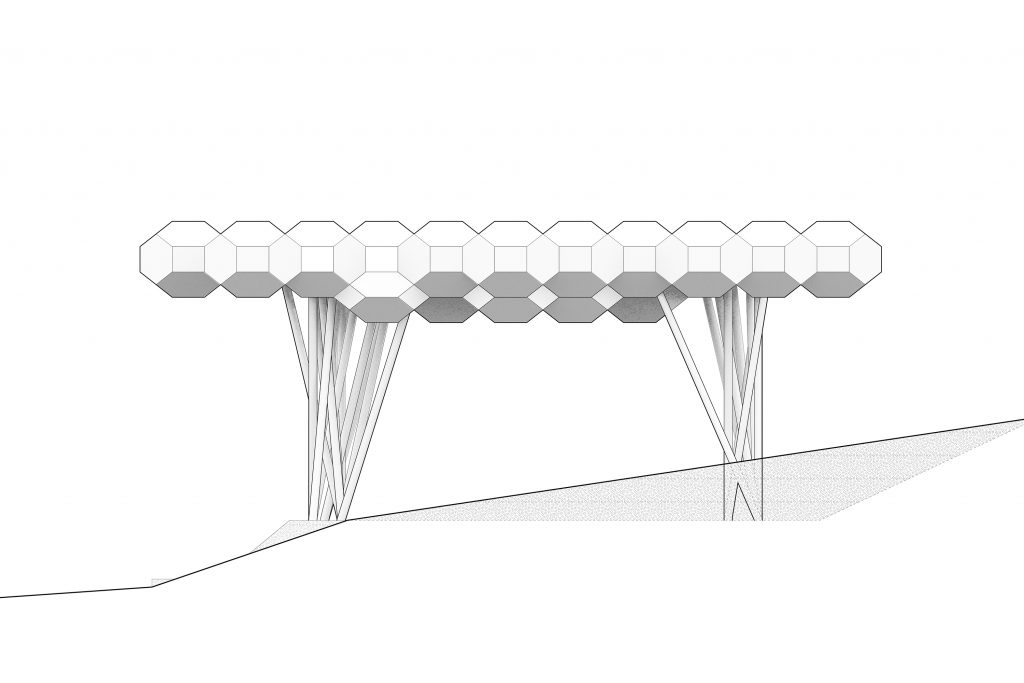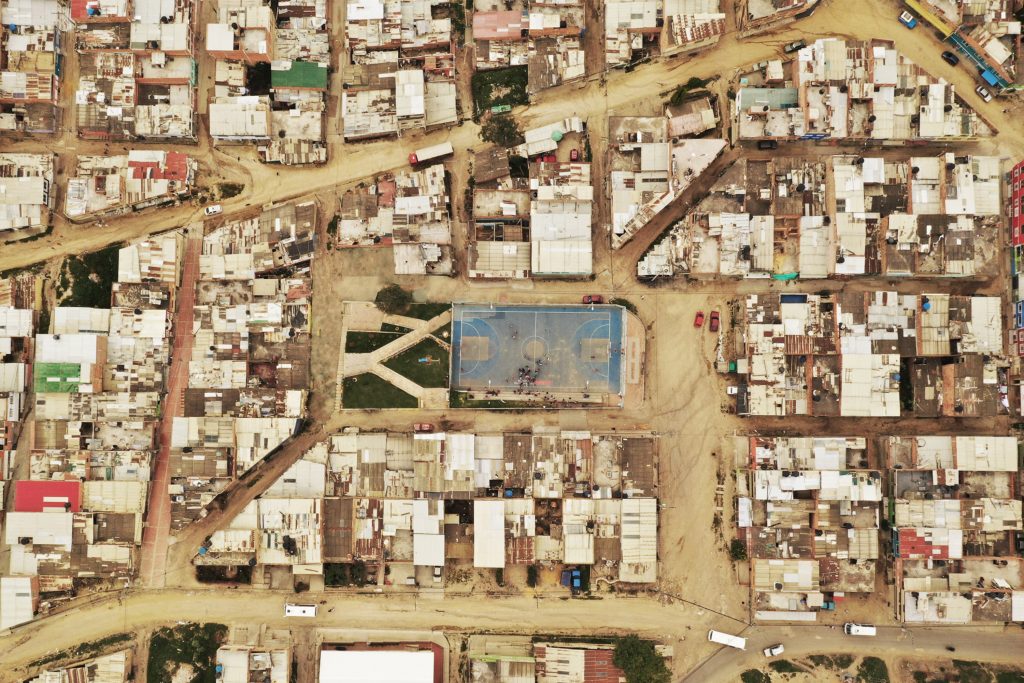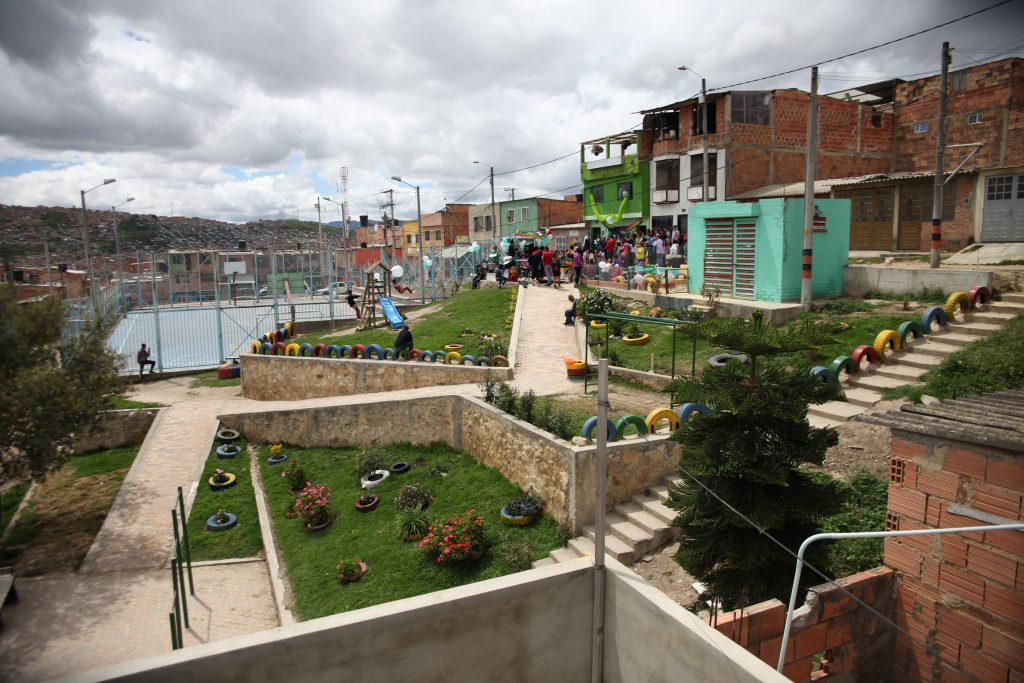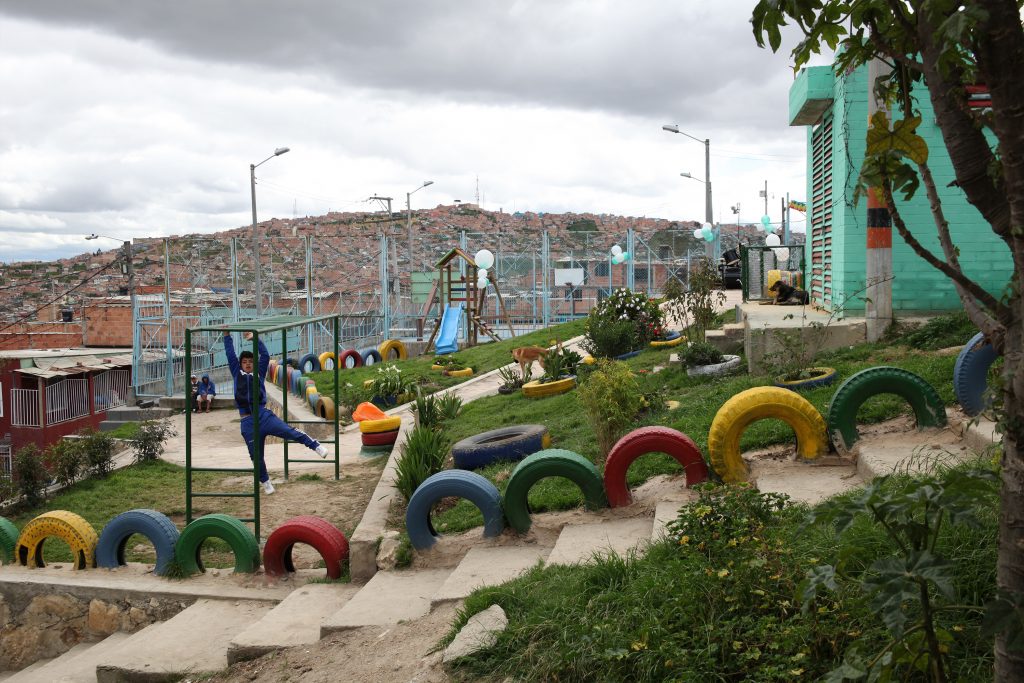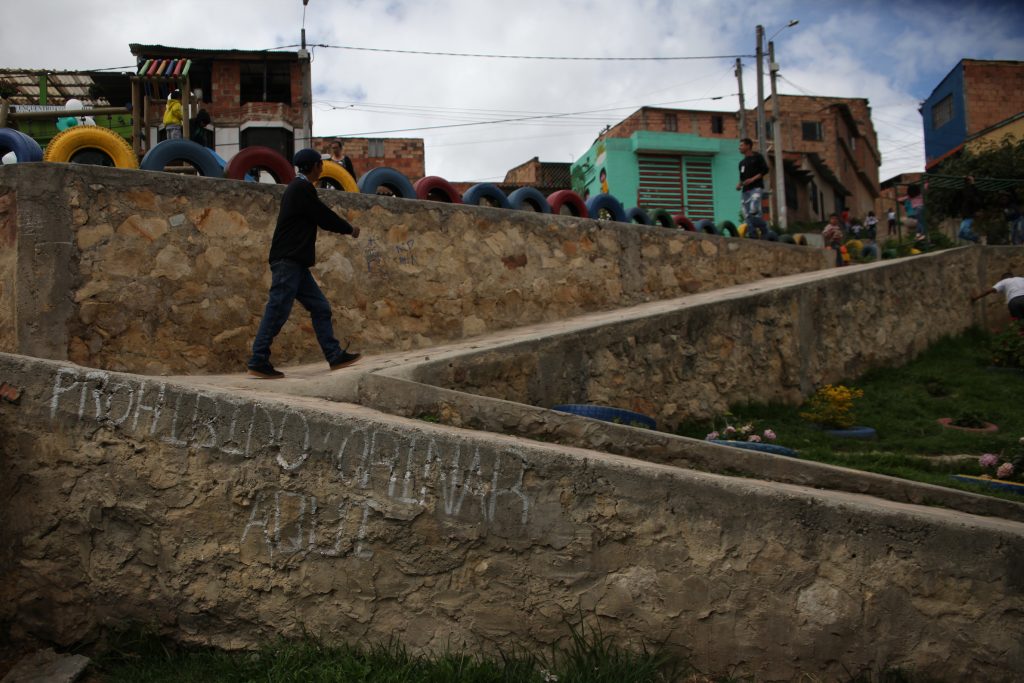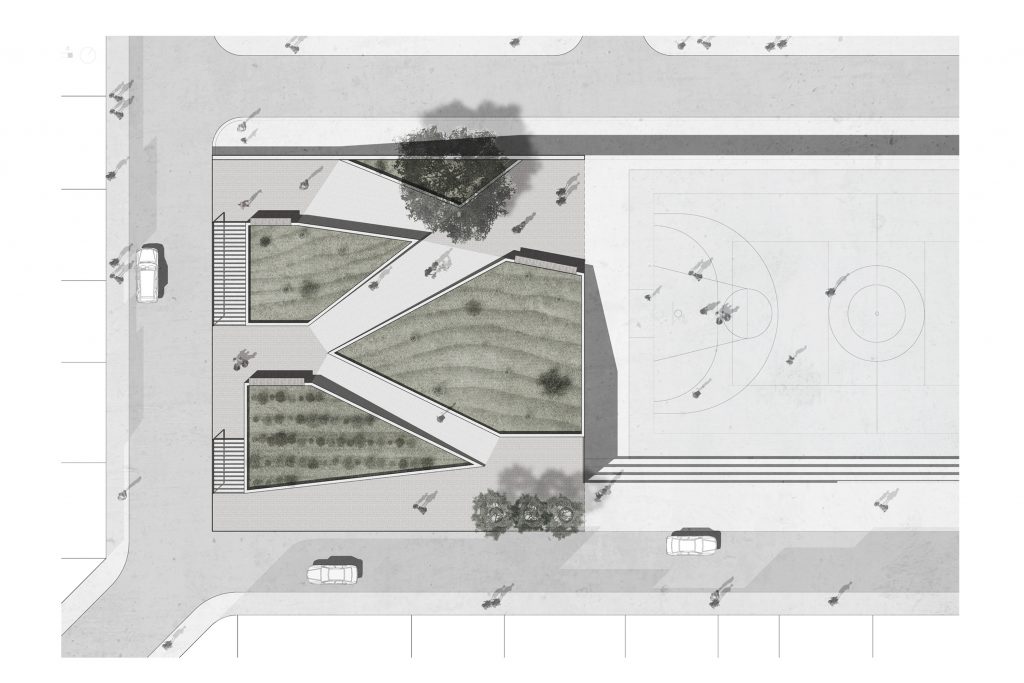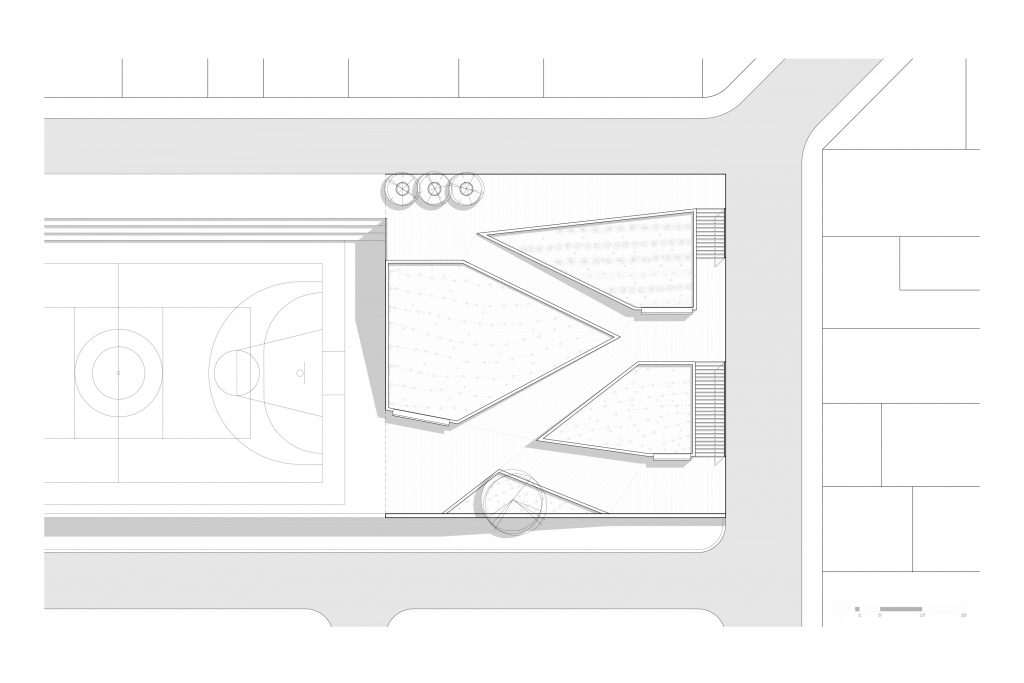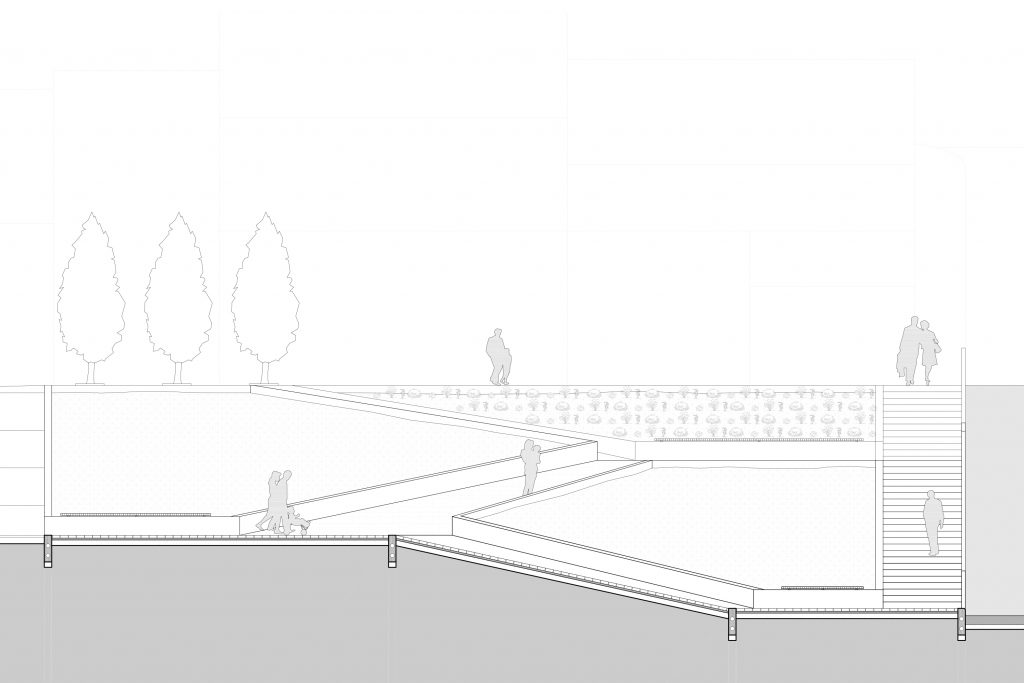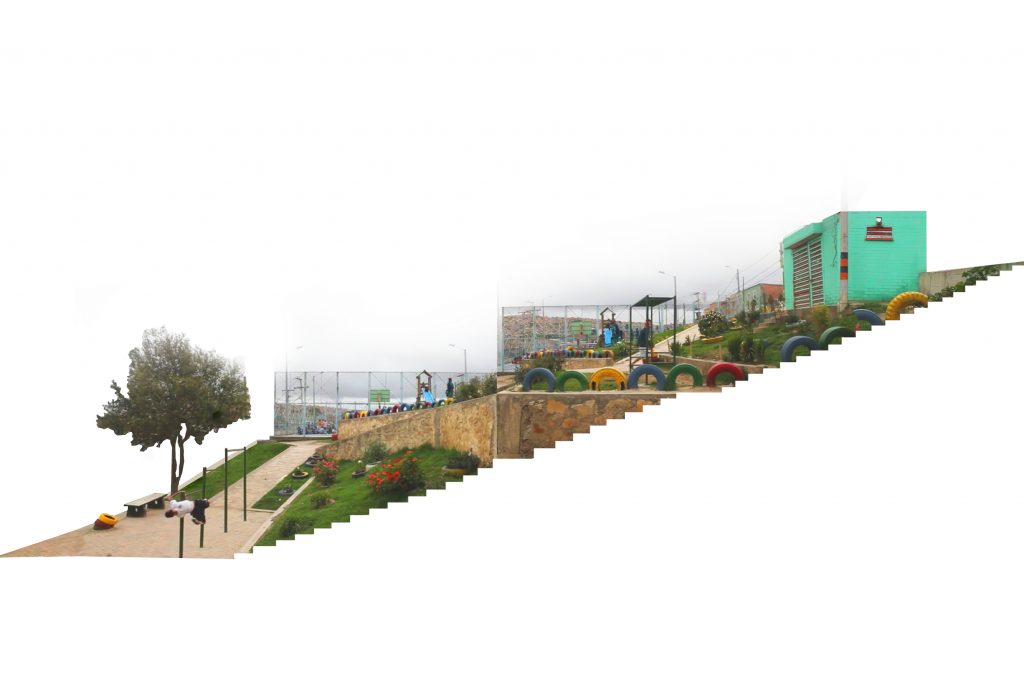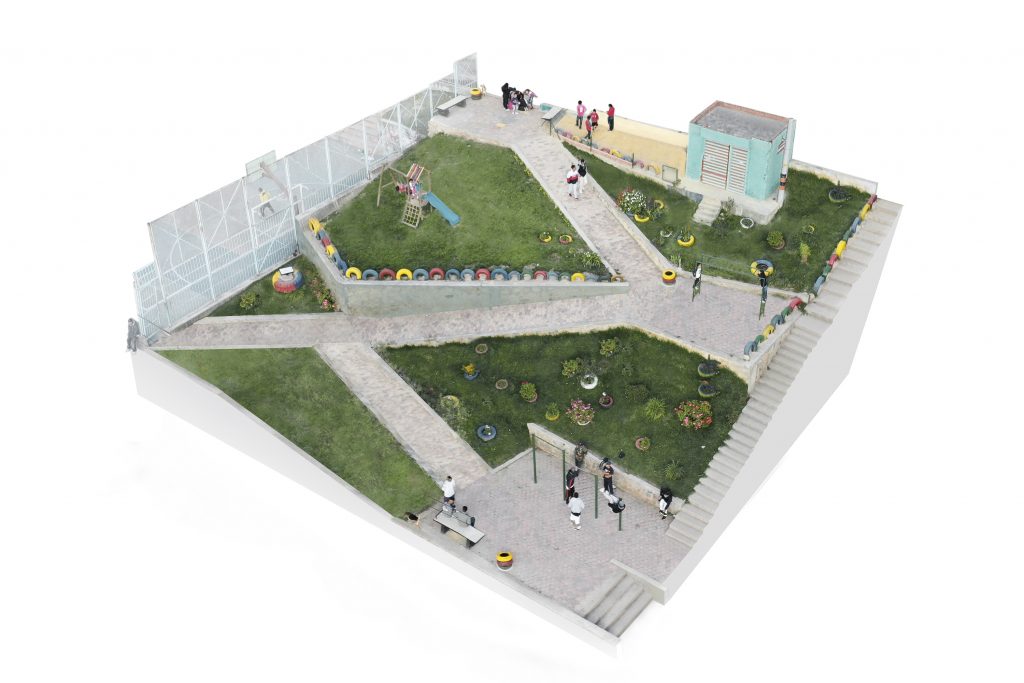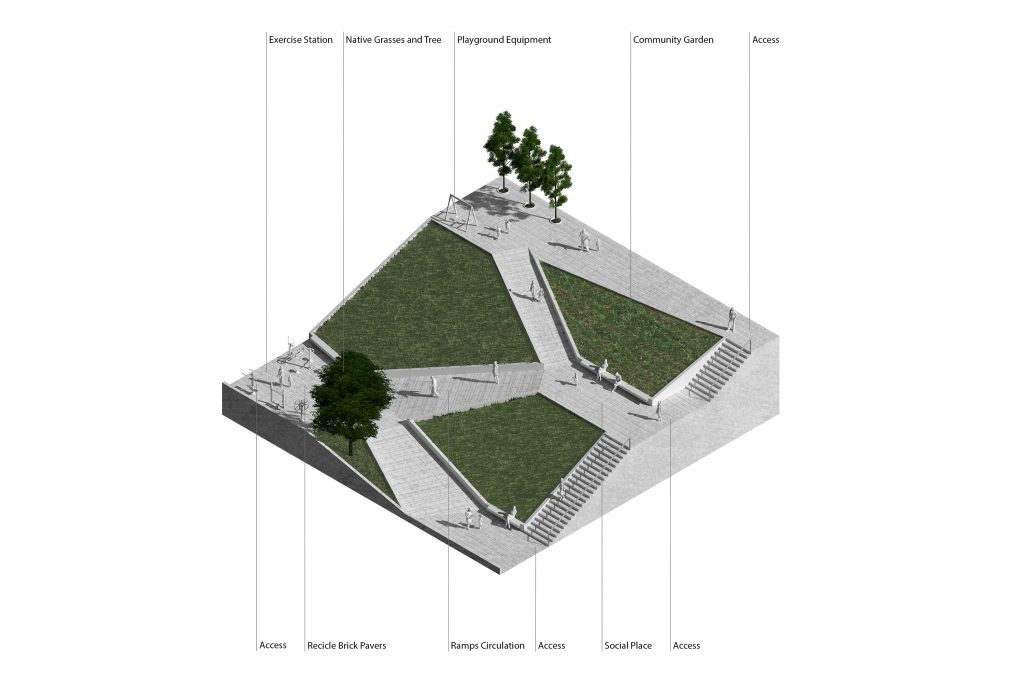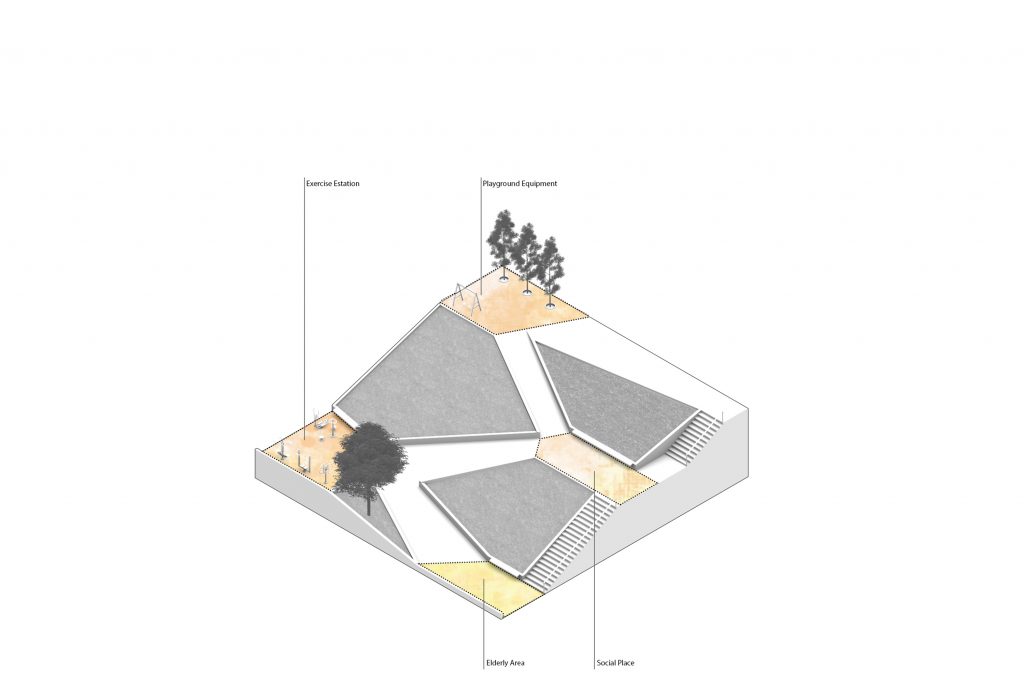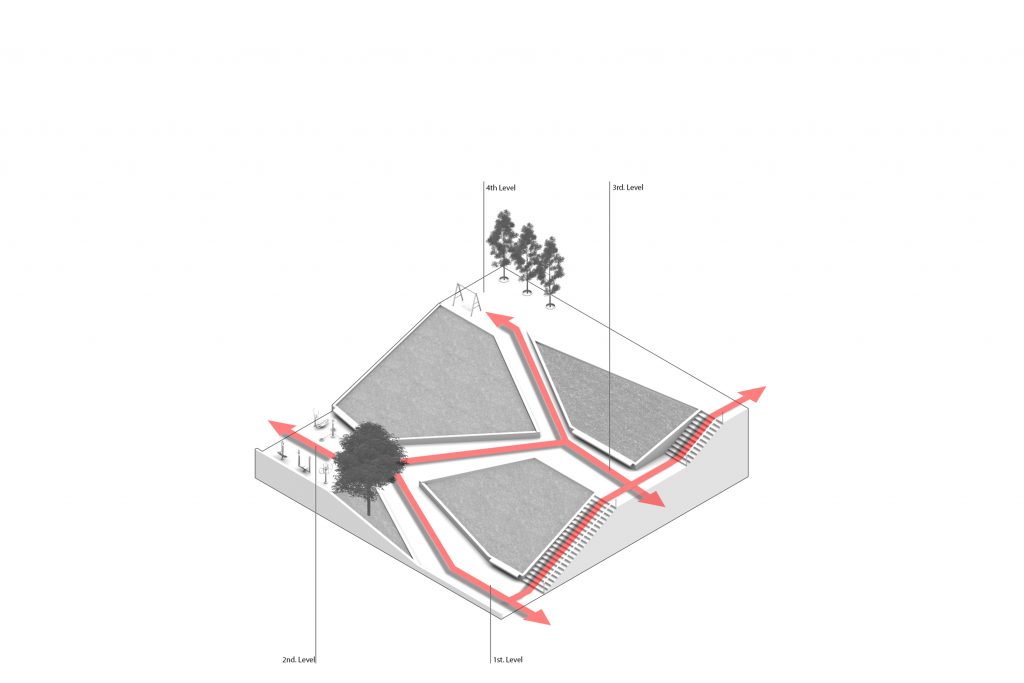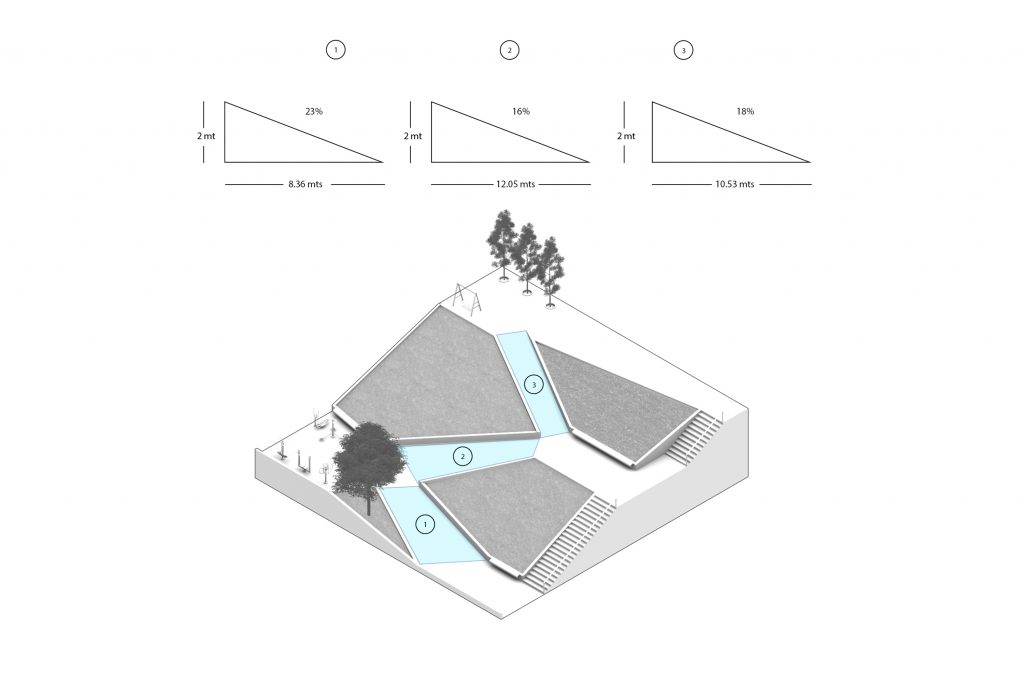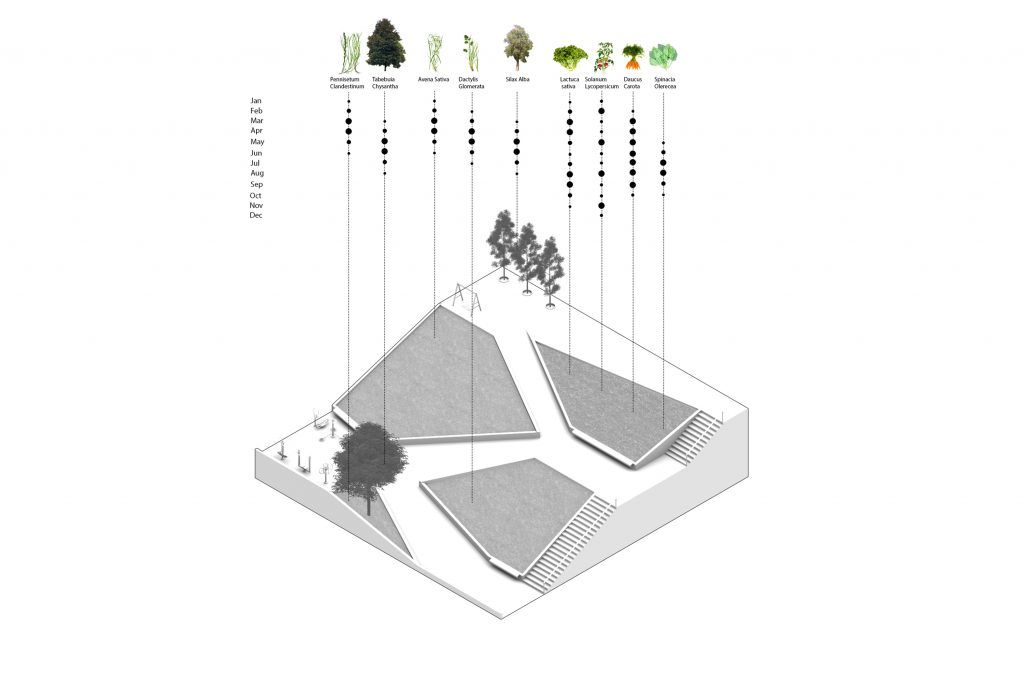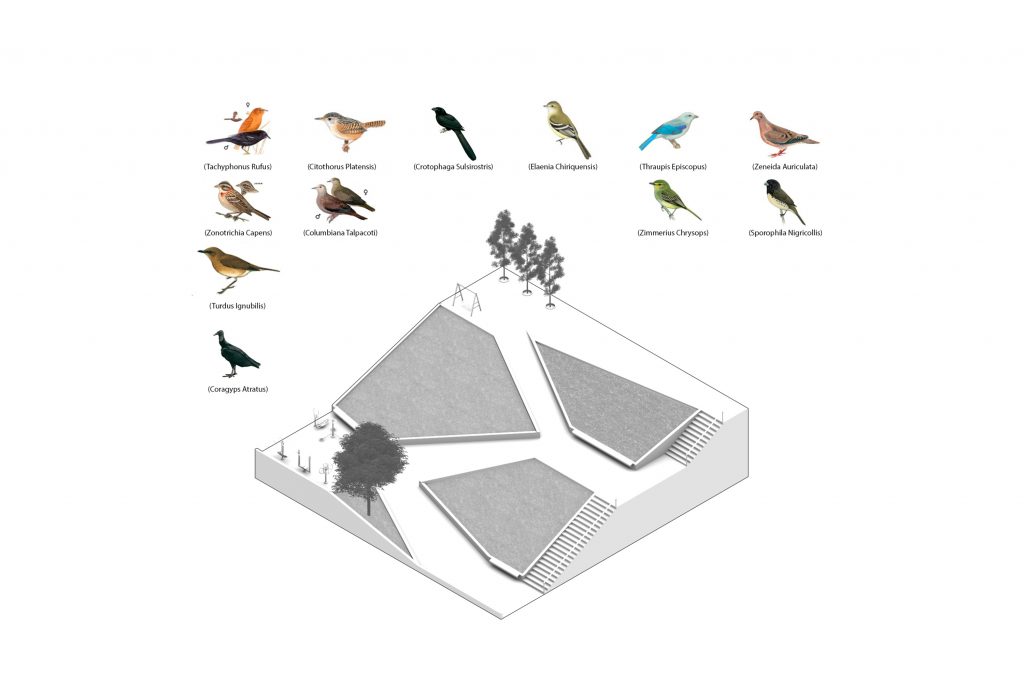Alto Fucha
Moravia
UVA Medellin
Casa de Lluvia
Project Description
Casa de la Lluvia de Ideas is a community space in the peripheral barrio La Cecilia in Bogota. It embodies the struggle for territory and dignified permanence of the communities of the higher basin of the Fucha River. The local community of La Cecila and the Colectivo Arquitectura Expandida worked together in the process of autoconstrucción of the space in guadua and polycarbonate.
The construction occurred during the IV Encuentro de Arquitectura Expandida in 2012; since then, the house has served as a community center and library under a scheme of self-governance. The process and the building are symbols for the right to the city in the context of this urban border. New Colectivos have joined efforts with Arquitectura Expandida and the local community for the maintenance of the house. They also embrace collective research projects around the notion of risk management from the community’s perspective as a challenge to institutional resettlement policies.
El Bosque De La Esperanza
ILIAD Lab Research Team: A. Brakke, S. Ferroni, F. Flores
Basic Data
- Date of Construction: 2011
- Date of last maintenance: 2014
- Location: Altos de Cazuca, Bogota
- Actors involved: Pies Descalzos Foundation, Shakira, Giancarlo Mazzanti
- Architect: El Equipo Mazzanti
- Plot ownership: Public land ownership
- Site visit objective: Define project’s impact on the local community
- Project objective: Provide the local community with sheltered soccer and basketball court
Location
Located on the northwest facing side of a slope the principal route of access to the project is on a major road for the neighborhood it sits in. Immediately uphill from the Mazzanti intervention sits a park in front of the Collegio Gabriel Garcia Marquez.
Calle 48, the road, connects the Transmillenio to the highest part of the neighborhood In close proximity sits a Police station, a school, and a church. Buses and trucks are frequent on Calle 48 and define the streetscape. From Uphill there is pedestrian access to the soccer court and the park.
Infrastructure
The neighborhood has quality access to electricity provided by the electrical provider. The park has free access to Wi-Fi located in front of the Collegio. There is free access to public drinkable water all day in the houses around the park. While the nearby Collegio was present prior to the intervention following the construction of the canopy a new Collegio was created uphill still donated by Shakira’s foundation.
Community
The community of the neighborhood is quite diverse and contains foreigners. According to a local who has lived in front of the park for 30 years the community is quite strong. According to her, the area of the park is quite safe even to walk at night while uphill it becomes more dangerous. The community has a Salon Communal that is located uphill from the project.
Organizers
Pies Descalzos Foundation is a Bogota-based foundation that builds public spaces and civic buildings in low-income communities. They specialize in increasing the level of education throughout Colombia. They raise funds from both privates and public actors. In the case of the El Bosque de la Esperanza most funds were devoted by Shakira. The architect of the project, Giancarlo Mazzanti is well known for a community-based social project which aims to increase the quality of life in Colombia’s slums and rural areas.
Plot ownership
The plot of land on which the intervention sits is publicly owned by the government which funded the pre-existing soccer court.
Objective of project
The aim of the addition of the canopy was to provide the community with a sheltered space for both sports and didactic activities, trying to develop community life in a neighborhood known for its lack of public space and of social infrastructure. The modularity of the canopy allows it to adapt to different site conditions. ( adapted from the architect’s website) The structure has become somewhat of a landmark not because of the architectural intervention per se but because it was donated by Shakira. this has changed his identification from Parque de la Esperanza to Parque de Shakira.
Project comments
The major danger for the users of the structure is the lack of a fence around the court which forces the children, most common users, to follow the ball into the street putting themselves in the danger with the traffic. In order to hold up the modular roof of the structure, tilted columns, resembling a cluster of bamboo in a forest, are positioned along the long side of the sports court forcing a complex geometry on the perimeter which complicated the addition of fencing towards the road. A frame construction in metal along the edges of the module creates the hexadecimal module which then is repeated in order to achieve the volume of the canopy. At first glance, the modules themselves represent the primary structure of the project while form above beams is apparent connecting the tilted columns and holding up the roof. Waterproofing is achieved by covering the top part of the modules with transparent corrugated plastic roofing sheets. The outer faces of the modules are clad in a green net, which was then broken into by a community of pigeons who now live in the structure. Maintenance of the canopy is required every few years to clean it from the bird’s biological waste and feathers. The bird’s waste also represents a health hazard for the health of the users.
The presence of the pigeons and their waste creates a sense of fear, while unnecessary, in the mind of the interviewed local who is afraid the structure will down from the weight of the biologic waste. Ultimately, the presence of the canopy, the latest addition to this public space only provides for a sheltered space for kids to play and for the community to meet while not influencing its community in any way.
According to the interviewed local, the canopy per se has not improved the neighborhood if not in instilling a sense of pride within the community to have a Shakira financed project.
Cazuca Park / Zig Zag Park
As current ILIAD Director, Aaron Brakke, was working at Universidad Piloto in Colombia, an opportunity to work with communities in the periphery of Bogota emerged. A multilateral, long-term collaboration gave way to the construction of Zig Zag park, a place for community building in a neighborhood affected by several forms of displacement.
The city of Bogota grew south with the explosive urbanization of the Tunjuelo River basin. Many of the neighborhoods were created by people moving into the city with their families, in an exercise of insurgent planning and architecture. Today, even though many of the neighborhoods have been formalized, precarious conditions prevail for many of their inhabitants, who live among extensive mining operations, but with unpaved streets and limited access to social services. Over the years, the south of the city has received displaced population from other parts of Colombia and from Venezuela, creating diverse, and often fragmented, neighborhoods.
Neighbors do not know their neighbors and don’t feel a sense of belonging, which we evidenced in their behaviors and words. We identified that many of them did not feel as if they had a community, nor that they had sufficient space to gather. We started working with a local community organization that promotes schooling by providing food and after-school learning support for children. We worked with them to identify a “leftover” space that was left vacant and had become a repository for construction debris in the neighborhood. Our aim was to develop a sense of solidarity and empowerment amongst residents so that they could take action to transform the built environment. We felt that if we could activate a public space together, new dynamics would emerge.
The project was developed through the synergy of many actors who abided by the methodology of Participatory Action Research, as developed by Orlando Fals Borda. The intervention involved several steps, including 1) Mapping the territory, 2) a workshop to Identify problems and needs, 3) a Dream Workshop to develop a list of objectives and collective dreams, 4) a Design ideas workshop to develop ideas for physical space, 5) the design of the park, 6) Crowd Funding, 7) Educational courses on construction with SENA (a public technical education institution) and 8) Construction.
This process has taken nearly five years and the investment in people and in the space is starting to feel like it has paid off and is reaping the reward. Residents of all ages are coming together to use this space. This has become a ‘place’ in the neighborhood to play, talk and build community.
This project was recognized in the I Biennial of Public Space of Bogota in August 2019.
TaDIC
In August 2019 we supported the Community Design and Innovation Workshop that took place in Tumaco, Colombia. During the workshop, diverse teams worked on the design of low-cost technologies, services, and experiences to address local issues or opportunities. A participatory design approach involving grass-roots community members, design, architecture, and engineering students and professors, was used to prototype a park, envisioned by a local community of recyclers, fishermen, and cocoa growers and their families.
The TaDIC was an immersive co-creation experience that took place between July 27th and August 12th, 2019 in the city of Tumaco, along the Colombian Pacific. Its purpose is to amplify local innovation capacities by teaching a co-design methodology through a project-based curriculum.
During the workshop, one of ILIAD’s researchers co-facilitated the work of a multidisciplinary team that included community members from the neighborhood where the project was envisioned. The group performed research through observation, participatory workshops in the community, site visiting, and interviews. The knowledge gained from this research phase was downloaded through collaborative meaning-making sessions that allowed us to determine the scope of the project and the design needs. After several ideations, experimentation, and feedback sessions, the group built a functional prototype of a playground. This unit sought to embody community values that had emerged during the research and serve as a device to help empower the community visions and efforts towards the park.
The Workshop was organized by the Universidad Nacional de Colombia and its local headquarters in Tumaco, supported by the University of Illinois at Urbana-Champaign, the University of Waterloo, Mount Royal University, the Social Sciences, and Humanities Research Council of Canada (SSHRC), and the Tumaco Diocese.


